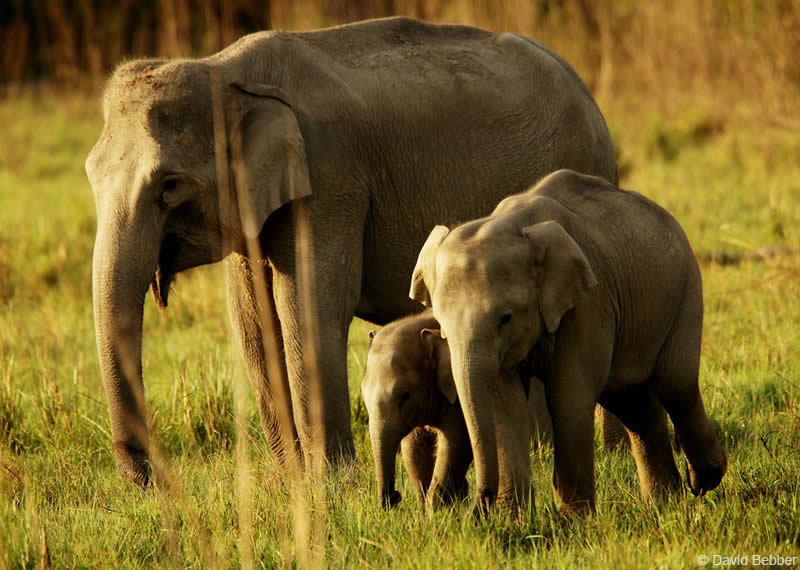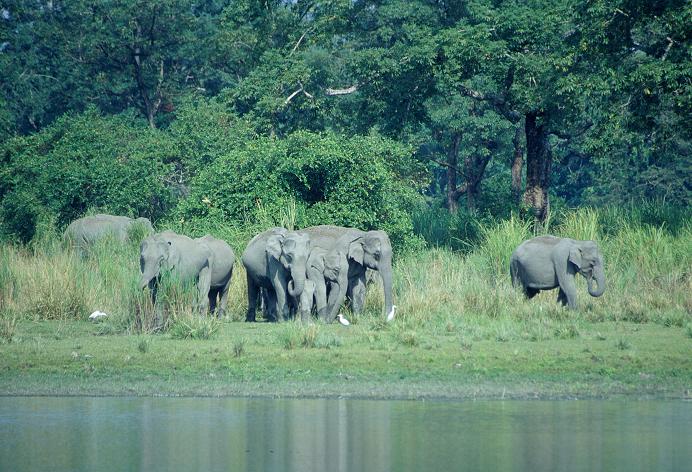Indian (Asian) Elephant
Species Data
Class: Mammalia
Order: Proboscidea
Family: Elephantidae
Scientific Name: Elephas maximus indicus
IUCN Red List status: Endangered
This map shows the range for all subspecies of Asian Elephant.
Description
The Indian Elephant is one of the recognised sub-species of the Asian Elephant.
Asian Elephants differ in many ways from their African relatives – they are smaller in size with smaller ears, and the back of the Indian elephant is more rounded making the crown of the head the highest point of the body. The African species has a two-fingered tip to its trunk where the Indian Elephant has only one ‘finger’; while the tusks of the male Indian Elephant are more curved and thicker than those of the African.
In fact, Asian and African Elephants differences go farther than appearances, as some genetic studies have shown that the Asian Elephant is thought to be more closely related to the extinct Woolly Mammoth than African Elephants.
They live for 60 to 70 years and adults reach maturity at about 15 years old.
The Bornean Elephant is another subspecies of the Asian Elephant, and is possibly descended from the now-extinct Javan Elephant.
Behaviour
These huge animals can spend up to 19 hours a day feeding, and will eat around 150kg of plant matter per day. Because of this, elephants are ecosystem engineers, clearing large areas of vegetation, opening up habitats and creating space for new growth. They use traditional feeding routes, preferring a mixture of grassland and forest where they forage for grasses (which make up the majority of their diet), bamboo, legumes, bark, succulent climbers and palms.
Elephants defecate (poo) between 16 and 18 times a day and can produce up to 220 pounds of dung in a day over an area of 125 square miles. This actually provides an important service, by helping to disperse seeds and nutrients. They stay close to water as they need to drink at least once a day, and when they live close to cultivated areas they will feed on crops such as banana, sugarcane or rice.
Asian Elephants are highly intelligent and lead complex social lives. They live in groups of 6-7 related females, and these are led by the eldest female or the ‘matriarch’.


Habitat
Asian Elephants are a generalist species, living in a wide variety of habitats from grasslands to forests, including tropical evergreen forest, semi-evergreen forest, moist deciduous forest, dry deciduous forest, dry-thorn forest and cultivated and secondary forests.
They will wander over hundreds of kilometres and need very large areas of suitable habitat.
Threats and Conservation
Asian Elephants once roamed through much of Asia south of the Himalayas, extending west into China and south to the islands of Sumatra and Borneo. However, loss of habitat, hunting over hundreds of years, and human encroachment have significantly impacted on their numbers.
Current estimates are for fewer than 50,000 Asian Elephants surviving in the wild, and their populations are restricted to isolated pockets of land. Because of the burgeoning human population in India, elephants and humans are often in conflict particularly in food-producing areas.
